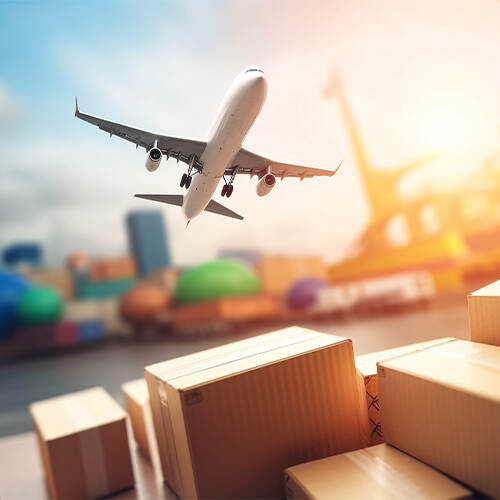China FBA Freight: Guide to Shipping from China to Amazon FBA
Shipping products from China to Amazon FBA (Fulfillment by Amazon) can be a complex process, especially for new sellers. Choosing the right freight method, understanding customs regulations, and optimizing costs are crucial for a smooth supply chain.
In this guide, we’ll break down everything you need to know about China FBA freight, including shipping methods, cost factors, customs clearance, and tips for optimizing your logistics strategy.
1. Understanding China FBA Freight
Amazon FBA allows sellers to store inventory in Amazon’s fulfillment centers, where Amazon handles packing, shipping, and customer service. However, sellers must first ship their products from manufacturers (often in China) to Amazon warehouses.
China FBA freight refers to the logistics process of transporting goods from Chinese suppliers to Amazon FBA warehouses in the US, Europe, or other markets.
Key Steps in China FBA Freight:
-
Manufacturing & Quality Control – Ensure products meet Amazon’s standards.
-
Packaging & Labeling – Follow Amazon’s FBA prep requirements.
-
Choosing a Shipping Method – Air, sea, express, or rail freight.
-
Customs Clearance – Proper documentation to avoid delays.
-
Delivery to Amazon FBA – Final transport to the designated warehouse.
2. Shipping Methods from China to Amazon FBA
The best shipping method depends on cost, speed, and volume. Here are the main options:
A. Air Freight
-
Best for: Fast shipments (5–10 days), smaller batches.
-
Pros: Faster than sea freight, good for urgent restocks.
-
Cons: Expensive for large shipments.
Options:
-
Commercial Air Freight – Economical for medium-sized shipments.
-
Chartered Flights – For large, high-priority shipments.
B. Sea Freight
-
Best for: Large, heavy shipments (15–40 days).
-
Pros: Cheaper per unit, ideal for bulk orders.
-
Cons: Slower, requires proper planning.
Options:
-
FCL (Full Container Load) – Best for large shipments (20ft/40ft containers).
-
LCL (Less than Container Load) – Shared containers for smaller shipments.
C. Express Shipping (DHL, FedEx, UPS)
-
Best for: Small, urgent shipments (3–7 days).
-
Pros: Fast door-to-door delivery.
-
Cons: Expensive for bulk orders.
D. Rail Freight (China-Europe Routes)
-
Best for: Shipments to Europe (18–22 days).
-
Pros: Faster than sea, cheaper than air.
-
Cons: Limited availability.
3. Key Factors Affecting China FBA Freight Costs
Shipping costs depend on several variables:
A. Shipping Method
-
Air freight is faster but pricier.
-
Sea freight is cheaper but slower.
B. Weight & Volume
-
Chargeable weight (based on actual weight or volumetric weight) affects pricing.
C. Destination & Distance
-
Shipping to the US vs. Europe impacts costs.
D. Customs Duties & Taxes
-
Tariffs vary by product category and country.
E. Seasonal Demand
-
Prices spike during peak seasons (Q4 holidays, Chinese New Year).
4. Customs Clearance for China FBA Shipments
Customs delays can disrupt your supply chain. Here’s how to avoid issues:
A. Required Documents
-
Commercial Invoice (product value, quantity).
-
Packing List (weight, dimensions, contents).
-
Bill of Lading (B/L) or Air Waybill (AWB).
-
FBA Shipment Label (Amazon-provided).
B. HS Codes & Import Duties
-
Each product has an HS Code (Harmonized System Code) for customs classification.
-
Research duty rates for your product category.
C. Amazon’s Requirements
-
Ensure proper FBA labeling (barcode, FNSKU).
-
Follow Amazon’s packaging guidelines to avoid rejections.
5. Choosing a Reliable China FBA Freight Forwarder
A good freight forwarder simplifies logistics. Consider:
A. Experience with Amazon FBA
-
Do they handle FBA shipments regularly?
B. Shipping Options
-
Do they offer air, sea, and express shipping?
C. Customs Expertise
-
Can they assist with customs clearance?
D. Tracking & Transparency
-
Real-time tracking and clear communication.
Top China FBA Freight Forwarders:
-
Flexport (digital freight forwarding).
-
ShipBob (e-commerce logistics).
-
DHL Global Forwarding (express & air freight).
6. Tips to Optimize China FBA Freight Costs
A. Consolidate Shipments
-
Combine multiple orders to reduce per-unit costs.
B. Use Hybrid Shipping (Air + Sea)
-
Fast shipping for bestsellers, sea freight for slow movers.
C. Negotiate with Suppliers
-
Some manufacturers offer better shipping rates.
D. Monitor Amazon Inventory Levels
-
Avoid stockouts without overpaying for rush shipping.
7. Common Mistakes to Avoid
Ignoring Amazon's Prep Requirements → Leads to rejected shipments.
Underestimating Customs Delays → Plan buffer time.
Choosing the Cheapest Option Without Research → Hidden fees may apply.
Poor Packaging → Increases risk of damage.
Conclusion:
Shipping from China to Amazon FBA requires careful planning. By selecting the right freight method, working with a reliable forwarder, and ensuring smooth customs clearance, you can reduce costs and improve efficiency.
Next Steps:
✔ Compare freight quotes from multiple providers.
✔ Prepare all necessary documents in advance.
✔ Monitor shipments to avoid delays.
By optimizing your China FBA freight strategy, you can ensure faster deliveries, lower costs, and a competitive edge in the Amazon marketplace.
Need help with China FBA freight? Contact us for expert logistics solutions tailored to your Amazon business!



